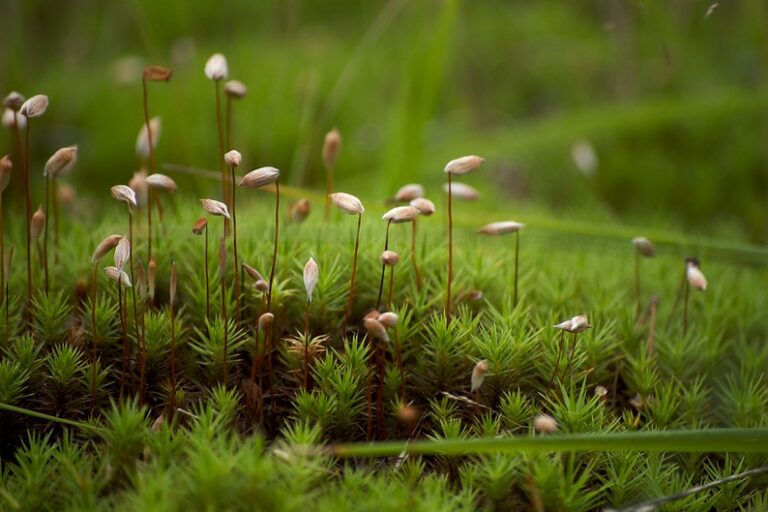- Mosses cover a China-size area of the globe and have a significant impact on ecosystems and climate change, according to a new study.
- Researchers conducted the most comprehensive global field study of mosses to date to quantify how soil moss influences soil and ecosystem services in different environments on all seven continents.
- Soil mosses can potentially add 6.43 billion metric tons of carbon to the soil globally, an amount equivalent to the annual emissions of 2.68 billion cars.
- Moss-covered soil offers several other benefits, including cycling of essential nutrients, facilitating faster decomposition, and reducing harmful plant pathogens.
It’s easy to miss the mosses, the ubiquitous green, silver and brown carpets that drape across nature’s surfaces, from forest to fen. It’s also easy to underestimate just how big a role these small but mighty organisms play in maintaining ecosystems and countering climate change.
A recent study in the journal Nature Geoscience looked into the contributions of mosses that grow on soil and found that they cover an estimated 9.4 million square kilometers (3.6 million square miles) of land — an area roughly the size of China.
On a global scale, soil mosses have the potential to add 6.43 billion metric tons of carbon to the soil, an amount roughly equivalent to the annual emissions of 2.8 billion passenger cars, underscoring the substantial impact of these wee plants.
The researchers found several other benefits for soil covered with mosses versus bare soils. For example, mosses cycle higher amounts of essential nutrients through the soil, contribute to faster decomposition, and reduce the number of harmful plant pathogens in the soil.
“The biggest surprise for us was that at least half of the attributes we measured were significantly enhanced under mosses compared with bare soil,” study co-author David John Eldridge, a professor of dryland ecology at the University of New South Wales in Australia, told Mongabay. “Overall, it’s a huge positive effect.”
Researchers collected soil samples from both natural areas and urban green spaces in 123 ecosystems across all continents, including Antarctica. The team sampled beneath mosses and bare soil at each site. After collection, the scientist used molecular and chemical analyses to find information about different soil traits.
The study reveals that moss influences specific soil attributes, including carbon sequestration and nutrient cycling, in particular of the nutrients phosphorus, nitrogen and magnesium. For instance, the research identifies a strong positive correlation between mosses and soil magnesium, a vital nutrient for plant metabolism and photosynthesis.
“I am someone who advocates that mosses should never be considered mere primitive precursors to vascular plants,” Marie Antoine, a botanist at Cal Poly Humboldt who was not involved in the study, told Mongabay in an email. “Therefore, it is quite satisfying to read further confirmation of the importance of soil-dwelling mosses in supporting multiple ecosystem services.”
Soil mosses affect surface microclimates by changing the soil temperature and moisture content. This, the authors suggest, is likely why we see so many positive ecological functions associated with moss.
Mosses have the most significant effect on soils when they cover a large area, grow in less productive ecosystems like deserts, or when they occur on sandy or salty soils. Additionally, the researchers found that certain types of mosses are more effective than others in promoting healthy soils. For example, mosses with longer life spans tend to contribute more carbon to the soil and have better control over harmful soil pathogens.

To demonstrate that mosses directly impact soil rather than live on soil that is already chemically and biologically enriched, the research team analyzed studies in which scientists added and removed mosses, comparing them to control procedures involving bare soils.
“They actually do enhance soil function,” Eldridge said. “They’re not just hanging out in spots with good soil.”
In disturbed natural areas, mosses are often some of the first organisms to grow, helping to restore the soil and bring back plant and animal life. Eldridge and his team plan more studies to understand whether mosses in urban areas can help to create healthy soils as effectively as they do in natural areas.
“We are also keen to develop strategies to reintroduce mosses into degraded soils to speed up the regeneration process,” Eldridge said in a statement. “Mosses may well provide the perfect vehicle to kick start the recovery of severely degraded urban and natural area soils.”
The researchers faced limitations in their study. One of the biggest was that they were unable to sample the extensive northern boreal forests. Mosses are everywhere in these regions, so, Eldridge said, they couldn’t compare mossy soil to bare soil and say for certain that moss is having an effect.

“It is clear that disturbance of soil moss cover has negative consequences both for soil fertility and soil carbon sequestration,” Antoine said. “If we add in the massive stores of soil carbon beneath Sphagnum-dominated northern peatlands (which were not considered in the Eldridge et al. study), the global significance of mosses can hardly be ignored.”
But mosses are often ignored, Eldridge said. Although some species of mosses are listed on the IUCN Red List of Threatened Species, the group is understudied compared to other plant groups. This makes it challenging to understand the threats they face and the extent to which they need protection.
“We need a greater acknowledgment of the services that soil mosses provide for all life on this planet,” Eldridge and co-author Manuel Delgado-Baquerizo, an ecosystem ecologist for the Spanish National Research Council, wrote in The Conversation. “This means greater education about their positive benefits, identifying and mitigating the main threats they face, and including them in routine monitoring programs.”
“My ploy would be for people to look out for them,” Eldridge told Mongabay. “Have a look at the mosses when you’re walking down the footpath, pavement or sidewalk. They’re all over the place and all different colors, and often you’ll see little bugs walking amongst them … If you look, especially under a magnifying glass, you’ll see how beautiful these environments really are.”
Citation:
Eldridge, D. J., Guirado, E., Reich, P. B., Ochoa-Hueso, R., Berdugo, M., Sáez-Sandino, T., … Delgado-Baquerizo, M. (2023). The global contribution of soil mosses to ecosystem services. Nature Geoscience, 1-9. doi:10.1038/s41561-023-01170-x
Banner image of moss sporophytes, the part of moss that makes spores. Image by Dano via Flickr (CC BY-NC 2.0).
FEEDBACK: Use this form to send a message to the author of this post. If you want to post a public comment, you can do that at the bottom of the page.
This story first appeared on Mongabay
South Africa Today – Environment
This article is licensed under a Creative Commons Attribution-NoDerivatives 4.0 International License.
You may republish this article, so long as you credit the authors and Mongabay, and do not change the text. Please include a link back to the original article.












